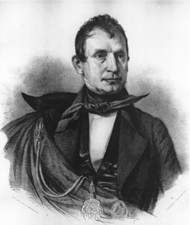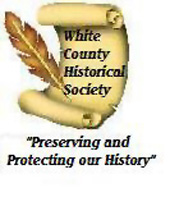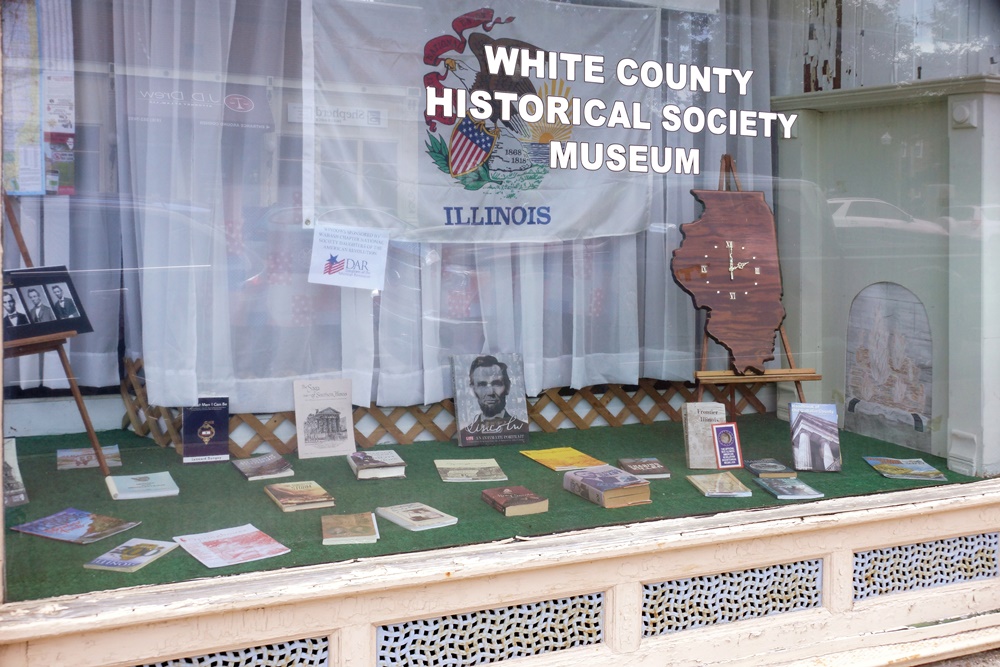

White County and the Illinois Bicentennial
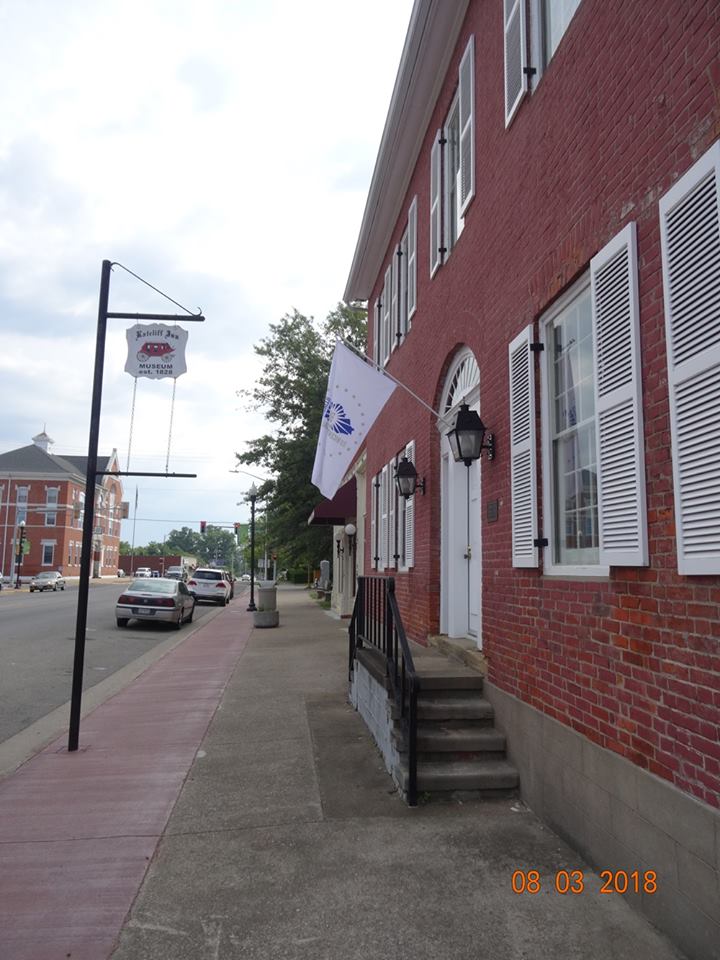
We are official, just need some good corn dishes: https://illinois200.com/events/illinois-bicentennial-corn-tasting/
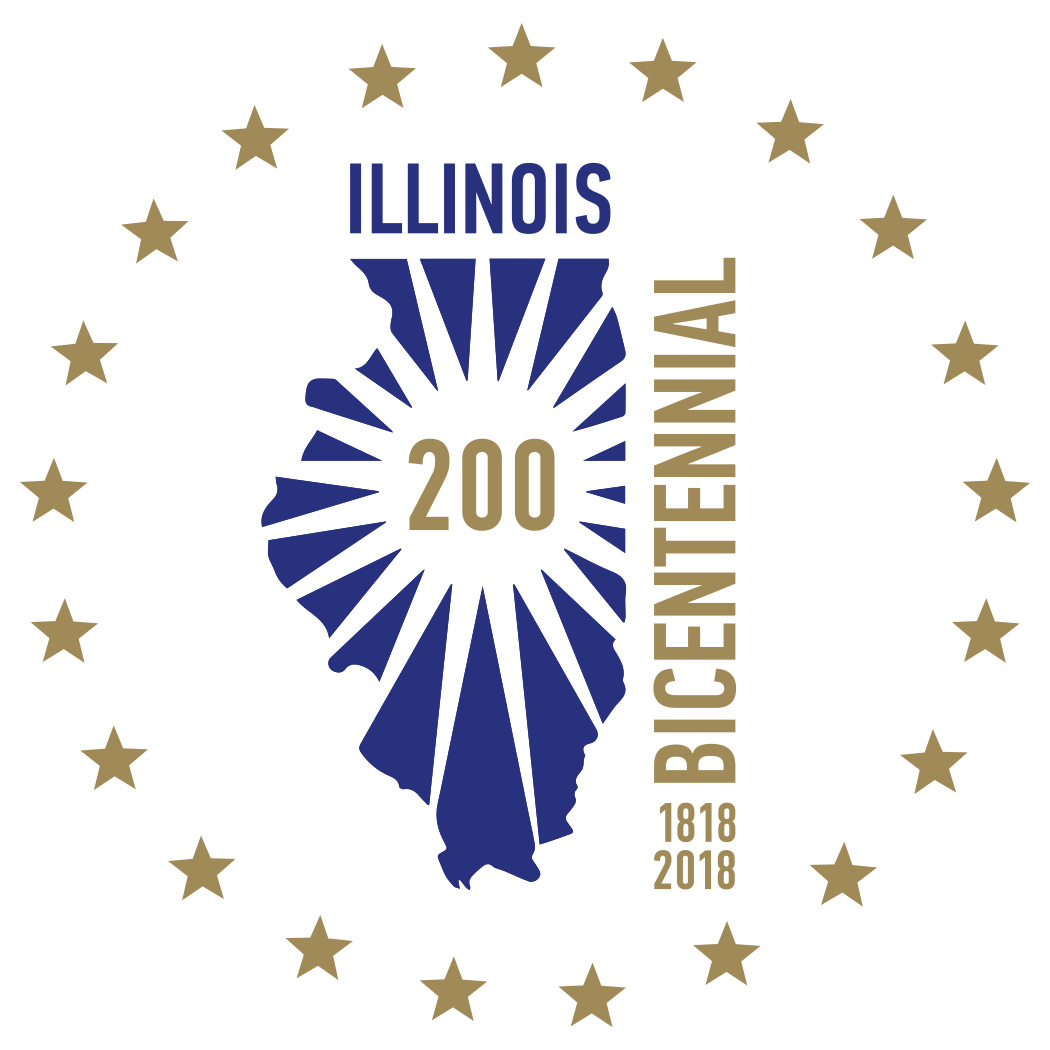
White County had European settlers likely as early as 1807, and was established as a county in 1815. There were about 4,000 people in the county in 1818, as the state struggled to show a population of 40,000 to be admitted as a state.
Discussing the two electors White County sent to the first Constitutional Convention is a good place to start a discussion of White County and the Bicentennial. These articles are really good, and I already have permission from one of the authors to keep them on this site. I got this nice logo from facebook, I think.
I have added a couple of pictures of the windows from the L. Haas Store that highlighted 200 years of Illinois history this summer. Wabash Chapter NSDAR helped with the project. We hope to have a display about Corn and Corn Day for the fall festival, held the second weekend of October. We will have the Bicentennial Corn Tasting Event at the Ratcliff Inn during Corn Day. We used that museum as our anchor for the Illinois Office of Tourism's Doors Open event. https://www.enjoyillinois.com/illinois-bicentennial/doors-open-illinois/?offset=1®ions=3 The page for the Robinson Stewart, Ratcliff and L. Haas museums has been taken down by the state.
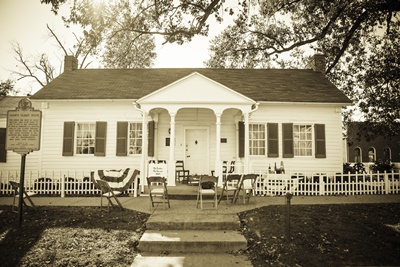
MAJOR WILLIAM MCHENRY
Signer of the 1818 State Constitution
Donated by ©Donna Buechler
©Illinois Genealogy Trails History Group
http://www.genealogytrails.com/ill/
We do not know where William McHenry was born or who his parents were. He passed away at a boarding house in Vandalia, Illinois on the third of February1835. He was buried in the Old State Burial Ground at Vandalia. In 1871 his body along with other Representatives were re-interned to the new South Hill Cemetery were a large monument marks the spot.
The next day after Major McHenry’s death, Mr. Davidson, the senator from White County addressed the senate and in stated part, “He now sleeps with his fathers. In the death of my much lamented colleague, Illinois had lost one of her earliest and most devoted friends,” and he concluded, “And Sir, he died as he has lived, in the service of his country.”
The following day Senator Edwards proposed a resolution that told of the adventurous pioneer and gallant ranger that for years had fought against ruthless Indian invasions. He also related how much he was endeared to a numerous circle of mourning friends. On February 7th 1835, the House eulogy was printed in the Illinois Advocate and in part reads: “Sir, he was among the most prominent of those bold and enterprising pioneers of whom we speak so much, and of whom we are sometimes disposed to think, perhaps too lightly; who first disposed the mastery over these fair plains and their un-subdued forests, with the ferocious beast of prey, and still more ferocious savage. He was among the first to scatter far and wide eth seeds of civilization over this fair portion of the fairest of thee earth; and to risk his life in battle his health by exposure, and toil, that the present inhabitants of Illinois may plant their farms in peace, and garner up their bountiful inhabitants in safety.”
William McHenry was born October 3, 1771. In the late 1790’s in Logan County KY he married Hannah Ruth Blackford. John, George, Henry H., William Jr., Martin G., Lucinda, Mary Jane and Elizabeth were the children born from this marriage. There is a reference of another son who may have been killed by Indians.
Around 1810 William, his brother Daniel and their families settled in Illinois on a major trail between Vincenees IN and US Saline’s Illinois Territory. Territorial Governor Ninian Edwards appointed William Captain of the Militia. The 4th Regiment was formed and he and his men daily searched for possible Indian uprising. In KY, William had been a member of Wayne Anthony’s Cornstalk Militia and as Lieutenant in Price’s Battalion of Mounted volunteers he fought at the battle of Fallen Timbers. In the War of 1812 he again was in the service of his country. The Black Hawk War in 1932 found him as a Major in charge of a Spy Brigade in the Mounted Volunteers. William McHenry was mustered out, August 14, 1832 at nearly 61 years of age due to ill health.
A petition, which was signed by William McHenry, was circulated in 1812 asking that Illinois be made a second-class territory. When statehood was confirmed in 1818 he was a delegate to the State Constitutional Convention and elected to the House of the First Session of the General Assembly. From then until his passing he served all but two sessions in the house or senate. Willis Hargrave and William McHenry signed the Constitution of Illinois from White County.
William McHenry did not have the pleasure of knowing that McHenry County was named for him. This certainly would have been an honor for a proud man, who loved people and politics. And the House eulogy concluded, “But it has been his lot to die as he lived, in the service of his country.”
Part of the sources for this article came from family stories, “Portraits and Biographical Album of Henry County Illinois” the White County archives, and Nancy Guau’s wonderful book, “William McHenry –Soldier, Statesman, Frontiersman”. There are also many web sites that provide information. For further information on William McHenry there is a biographical article under:
http://www.genealogytrails.com/ill/mchenry/majormchenry.htm
Donna Buechler, William McHenry’s great, great, great granddaughter
Return To The 1818 Constitution Page
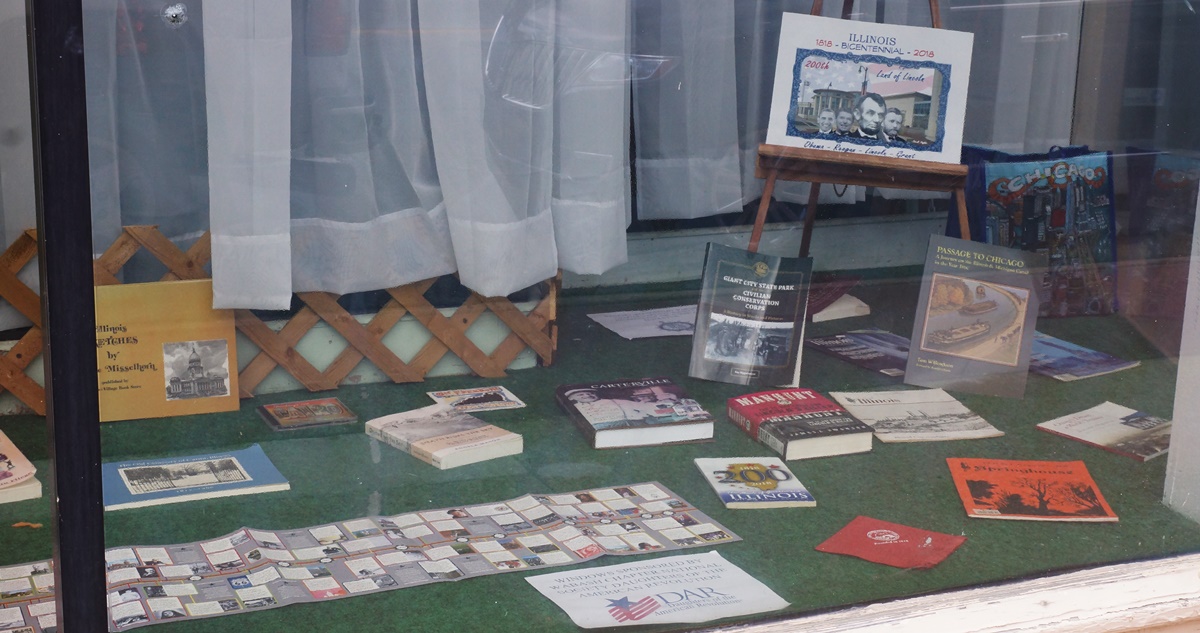
Willis Hargrave
Signer of the 1818 Illinois Constitutions
jeannehargrave <https://jeannehargrave.wordpress.com/>
OUR HARGRAVE FAMILY-- I have edited out much of the very interesting background material to emphasize White County connections.
* About <https://jeannehargrave.wordpress.com/about/>
*WILLIS MILES HARGRAVE*
*WILLIS * was born to William and Elizabeth Miles Hargrave ca 1770 at
Charleston or in Charleston County, South Carolina.
County Charleston SC
<https://jeannehargrave.files.wordpress.com/2014/03/county-charleston-sc.png>
He was the youngest of William's six sons and the next-to-youngest child.
He and *JANE BROWN* married on July 2, 1889. Family patterns suggest
that they probably married in North Carolina. They were both 19 years of
age. They produced 9 children with a 10^th child possible. Jane may
have been born in Virginia and have been a cousin or aunt of Seth's
wife, Sarah. She may also have been born at Trent in Jones County, North
Carolina.
*Willis and Jane* led the way west when they migrated from North
Carolina to Logan County in western Kentucky ca 1790. His just older
brother, Seth, probably undertook the journey with them. His brothers
John Robert, Hezekiah and Samuel followed a few years later as did their
sister, Mary, with her husband Solomon Sessions.
Logan County Logan County
<https://jeannehargrave.files.wordpress.com/2014/03/logan-county1.png>
Kentucky
Their first child, *Samuel Hargrave* was born on March 27, 1790 in
either North Carolina or Kentucky. Jane was either pregnant or tending a
baby – or both – while making this arduous trek into southwestern
Kentucky. Samuel married*Sally Berry* in 1823.
Their second child, *Margaret Hargrave* was born in Logan County on
December 2, 1791. She married *James Ratcliff* in 1808.
*Willis Hargrave* appeared on the tax lists for Logan County in 1792 and
1795
* *Their third child, *Seth Willis Hargrave *was born on January 25,
1794 in Logan County. Seth married twice: *Polly Penrose Pomeroy* in
1818 and *Anna Elizabeth Myers* in 1834.
Their fourth child, *Nancy Hargrave* was born in October 2, 1796 in
Logan County. She married *Benjamin White* on September 25, 1815.
Their fifth child, *George B Hargrave* was born on October 27, 1797 in
Logan County. He married *Lucinda McHenry *in 1819 and *Mahulda Bourland
Clark* in 1836. One ancestry.com <https://ancestry.com/> entry lists
him as George B F Hargrave – so – Benjamin Franklin?
Records of the "Corn Stalk" Militia show *Willis* as Lieutenant in the
23^rd Regiment of Kentucky Militia on November 27 1797. This was the
first record of him in a military context. It would not be the last.
Willis and Jane's sixth child, *Rachel Hargrave* was born on October 23,
1799 in Logan County. She married *John Allen Richardson* in 1816 in
Illinois. They had 7 children.
In records of the Corn Stalk Militia of Kentucky, *Willis* appears in as
a Captain of the 23^rd Regiment on November 5, 1800.
*Willis* appeared on the tax payers list for Logan Co KY in 1800.
Their seventh child,_ _*Lee Hargrave* was born on February 16, 1802 in
Logan County, Kentucky. He married *Elizabeth LNU* in 1822.
Unfortunately, no surname has been listed for her. No children noted.
*Willis* sold Berry's Salt Lick in Logan County on June 25 1803. They
sold 219 acres on Big Muddy Creek in Logan County on April 3 1807.
Their eighth child, *Light Hargrave* was born on April 6, 1803 in Logan
County. He died 3 days later on April 9, 1803.
Records of the Cornstalk Militia of Kentucky indicate
that *Willis *continued as a Captain in the 23^rd regiment of Kentucky
Militia on August 11, 1806.
Daughter, 17 y/o *Margaret Hargrave* married *James Ratcliff* on April
24, 1808 in Logan County. They had one child.
*Willis and Jane* again led the way when they moved their family north
across the Ohio River and settled at Shawneetown in southeastern
Illinois. Note that then Randolph County was just across the Wabash
River from Posey County, Indiana where Seth would settle a few years
later and a few counties west of Warrick County where their brother,
Hezekiah, would locate.
Randolph County Randolph County IL
<https://jeannehargrave.files.wordpress.com/2014/03/randolph-county-il1.png>
Illinois Territory
At age 40, on July 20, 1810, *Willis *was appointed Captain in the 3^rd
Regiment of Illinois Militia. The Unit was called 'Captain Hargrave's
Company of Mounted Volunteers'. He and his unit were present at the
Battle of Tippecanoe on November 11, 1811.
The mid-1810 census found,* **Jane* and the younger children alone in
Randolph County in the Illinois Territory. With *Willis* in the field
were their sons Seth (age 16) and Samuel (age 20).
*Willis* was named Major of the 4^th Regiment of Illinois Militia on
November 29, 1811.
But, scary as all the it-must-be-the-end-of-the-world events of 1811 and 1812 must have
been, *Willis* went about his business. Among his enterprises, he leased
and operated the Salt Works on the Saline River near Equality. His
workforce was composed of a large number of slaves and indentured servants.
Gallatin County was created County Gallatin IL
<https://jeannehargrave.files.wordpress.com/2014/03/county-gallatin-il.png>from
Randolph County in 1812.
/Background: On February 12, 1812, the U S Congress created the
Shawneetown land district. Leonard White, Willis Hargrave, and Phillip
Trammel constituted a committee to set aside the land adjacent to these
salt works as a reservation for the benefit of the salt works. The
timber was needed for fuel to boil down the brine. Something like
100,000 acres of land was reserved from sale in the immediate vicinity
of the Great Half Moon Lick which was found near Equality./
/Background//: One of the greatest salt licks to be found in the United
States was located on the Saline River, which rose in Hamilton,
Franklin, and Williamson Counties and emptied into the Ohio in Gallatin
County. The local Indians and French settlers had been working the site
long before the Americans arrived./
/Background//: The United States officially declared war on Britain in
June 1812. During the War of 1812, the Illinois militia units were
tasked with defending the home ground while the Kentucky militia served
along federal troops in the major battles./
Independent Cavalry Companies were organized for the protection of the
remote settlements in the lower Wabash country, of which *Willis
Hargrave, *William McHenry*, *Nathaniel Journey*, *and Captain Craig, at
Shawneetown, and William Boon, on the Big Muddy, were respectively
commanders, ready, on short notice of Indian outrages, to "make pursuit
of the deprecator".
/Background//: In early September 1812, news of the siege arrived in
Vincennes as Colonel //William Russell/
<http://en.wikipedia.org/wiki/William_Russell_(Kentucky)>/ was passing
through with a company of regular infantry and a company of
rangers. Colonel Russell's companies joined with the local militia and U
S //7th Infantry Regiment/
<http://en.wikipedia.org/wiki/7th_Infantry_Regiment_(United_States)>/ //and
marched to the relief of Fort Harrison. Over 1000 men arrived from
Vincennes on 12 September and the Indian force departed. The next day,
however, a supply train following Colonel Russell was attacked in what
became known as the Attack at the Narrows./
In a morning report made at Camp Russell, dated Sept. 12, 1812: "of the
troops under the command of Major Benjamin STEPHENSON, we find companies
under the command of Captains James B. MOORE, W. B. WHITESIDE, Absolem
COX, Jacob SHORT, *Willis* *Hargraves,* Samuel WHITESIDE, Nathaniel
JOURNEY and Amos SQUIRES, giving an aggregate of 570 men." Two companies
on this report: Absolem COX'S and William (WILLIS) HARGRAVE'S were
independent companies of the Illinois Militia.
*WILLIS HARGRAVE* was promoted on March 12, 1814 from Captain to Major
of the 4^th Regiment of Illinois Mounted Volunteers.
His sons,* **Samuel* and *Seth *Hargrave served as Lieutenants of the
4^th Regiment of Illinois Mounted Volunteers in 1814 under the command
of their father. Their younger brother *George B* served as a Captain of
the 4^th Regiment of Illinois Militia in 1814. Seth also served with
Captain Daniel Boultinghouse's company of mounted volunteers from
September 8 to December 8, 1814.
Willis and Jane's daughter, 19 y/o *Nancy Hargrave* married *Benjamin
White* on September 25, 1815.
/Background: //In 1815, in the aftermath of the New Madrid Earthquake,
the U S Congress passed the first Disaster Relief Act by providing the
landowners of ground ravaged by the earthquakes with an equal amount of
land in unaffected regions./
*Willis* purchased 3 tracts of land in northeastern Gallatin County on
November 29, 1815 in the area which was soon to become White County. He
paid $2.00 per acre for 480 acres.
He also claimed 120 acres in the area would become White County on
December 7, 1815.
Although not specifically stated, it appears that he made a claim for
land under the Disaster Relief Act.
/On December 9, 1815, White County was created out of the northeast
portion of Gallatin County./
/( From "Sesquicentennial Carmi, Illinois, 1816-1966".) "/It was a cold
winter morning in 1816. Eight men on horseback rode out of Equality;
took the trail toward New Haven. Daniel Hay was with them. Col.
Hargrave led the way, followed by Capt. Leonard White ; Hargrave's sons,
George and Samuel; sons-in-law, Benjamin White, James A. Richardson and
James Ratcliff." They met at the place that became Carmi and decided
(assumedly with the agreement of other settlers) that that place on the
Little Wabash River would be a suitable County Seat. Sons, George
B and Samuel Hargrave and sons-in-law Benjamin White (Nancy), James A
Richardson (Rachel) and James Ratcliff (Margaret) were members of that
group.
White County County White IL
<https://jeannehargrave.files.wordpress.com/2014/03/county-white-il.png>
Illinois
*Willis and Jane* moved the family from Equality in Gallatin County to
White County and settled near Carmi where Willis established a farm.
Their daughter and son-in-law, *Margaret and James Ratcliff* and their
small daughter followed. Son-in-law, *James Ratliff* was soon appointed
County clerk and recorder for White County
On February 12, 1816, Governor Ninian Edwards appointed *Willis
Hargrave* and Joseph Pomeroy to be Judges of the County Commissions
Court for the new county, a position he held for 2 years. (Their son,
Seth, later married Joseph's daughter, Polly) (Also See Online
"Territorial Papers" compiled by Clarence Edwin Carter and transcribed
by Kim Torp)
Son-in-law *Benjamin White* served as a commissioner for White County.
In addition to other official duties, *Willis* also served as a surveyor
for the new County.
"(James) Ratcliff, White, Hogg and Hays recommended for the county seat
a 40- acre tract in the northeast quarter of Section 13; announced that
Leonard White and Lowry Hay would donate 20 of these acres to the
county. A stake had been driven in the center to mark the public
square. Carmi township was 'christened' on April 16, 1816. Citizens
gathered at the log house of John Craw."
In 1828, *James Ratcliff*, (presumably with the assistance of his wife
Margaret Hargrave Ratcliff), built the Ratcliff Inn at Carmi which, when
new, was considered one of the finest hotels in Illinois. "a very
comfortable little tavern with a blazing fire" enthused one English
visitor. "What a sight the tavern must have been — a two-story brick
with a charming Federal entrance."Old Beaver" Ratcliff was busy — county
clerk, probate judge, postmaster, storekeeper and hotel owner." Abraham
Lincoln was their guest on an occasion in 1840 when he was campaigning
for William Henry Harrison.
Historic Ratcliff Inn Ratcliff_Inn_at_Carmi
<https://jeannehargrave.files.wordpress.com/2014/03/ratcliff_inn_at_carmi.jpg>
at Carmi in White County IL
Daughter, 17 y/o *Rachel Hargrave* married *John Allen Richardson* ca
1816 in Illinois. John was the son of Nathaniel and Ann Read Richardson)
Rachel was his second wife. They had 7 children
On August 12, 1817, *Willis* resigned as Major of the 4^th Regiment of
Illinois Militia. He, along with his sons, would return to arms in Black
Hawk's War in the early 1830s.
He was elected to and served in the Third Illinois Territorial
Legislature during the 1817 and 1818 terms from White County. He signed
the Constitution of Illinois, upon which the territory was admitted to
the Union in 1818. He served as a state senator in the first general
assembly of the State of Illinois.
Son, 24 y/o *Seth Hargrave* married *Polly Penrose Pomeroy* on April 23,
1818 in White County. They had 5 children between 1821 and 1833. Polly,
born January 23, 1802 in Kentucky, was the daughter of Joseph and Ellen
Faulkner Pomeroy. Her father was also a major player in the area at the
time.
The 1818 Census of White County lists *Willis Hargrave* as the owner of
the indentures of 8 persons in addition to 14 slaves.
The formation of statehood in Illinois in 1818 was decided against a
backdrop of the heated slavery issue. Willis Hargrave was a member of
the committee to draft the Illinois Constitution*.* This constitution
was modeled after those of Ohio and Indiana, although, unlike those
states it protected the indenture system which was already in place,
thanks to the efforts of the Saline (salt mine) lessees *Hargrave,*
Leonard White, and those who were proslavery. As delegates from White
Co, Hargrave and William McHenry signed the Illinois Constitution
on* *August 26, 1818 /(Inter-State Publishing Company 1883330; Metzger
1971101-104)./ After the gubernatorial election of 1822, where 75
percent of Gallatin Co citizens voted in favor of the proslavery
candidate Judge Thomas C. Browne, *Willis Hargrave asserted his wishes
to legalize slavery in the state*. *Hargrave was accused of establishing
a proslavery organization and conspiring to bring slaves into the
state. *In December of 1823, *Hargrave held a meeting of the "Friends of
a Convention" aimed at amending the constitution to allow slavery.* The
slavery question was a statewide concern for many citizens and it
appears that Hargrave was very much involved in the heated debate. No
changes were made, however and, *in the end,* *Illinois remained a free
state*. Note: Most of the lessees at the Saline Reservation (salt
mines) used slave or indentured labor to produce salt. In fact, Gallatin
Co held 28 percent of the slaves in Illinois in 1820, second only to
Randolph Co. Based on census information, Willis Hargrave in 1818, 1820,
and 1830 held 14, 10, and 13 slaves, respectively (Appendix G). It is
probable that he had held more because in 1815 he indentured eight at
one time and at least nine in 1818 in White Co /(Metzger 1971:49–51, 80,
83)./
Among the pre-1818 settlers to White County were the Robinsons, Ratcliffs, Webbs, Hargraves, McHenrys, Stewarts, Lands, Grays, and many more. We probably knew this at one time, but Robinson, Illinois, in Crawford County, is named for White County's John M. Robinson, US Senator 1831-1843. Of course McHenry County is named for William McHenry.
